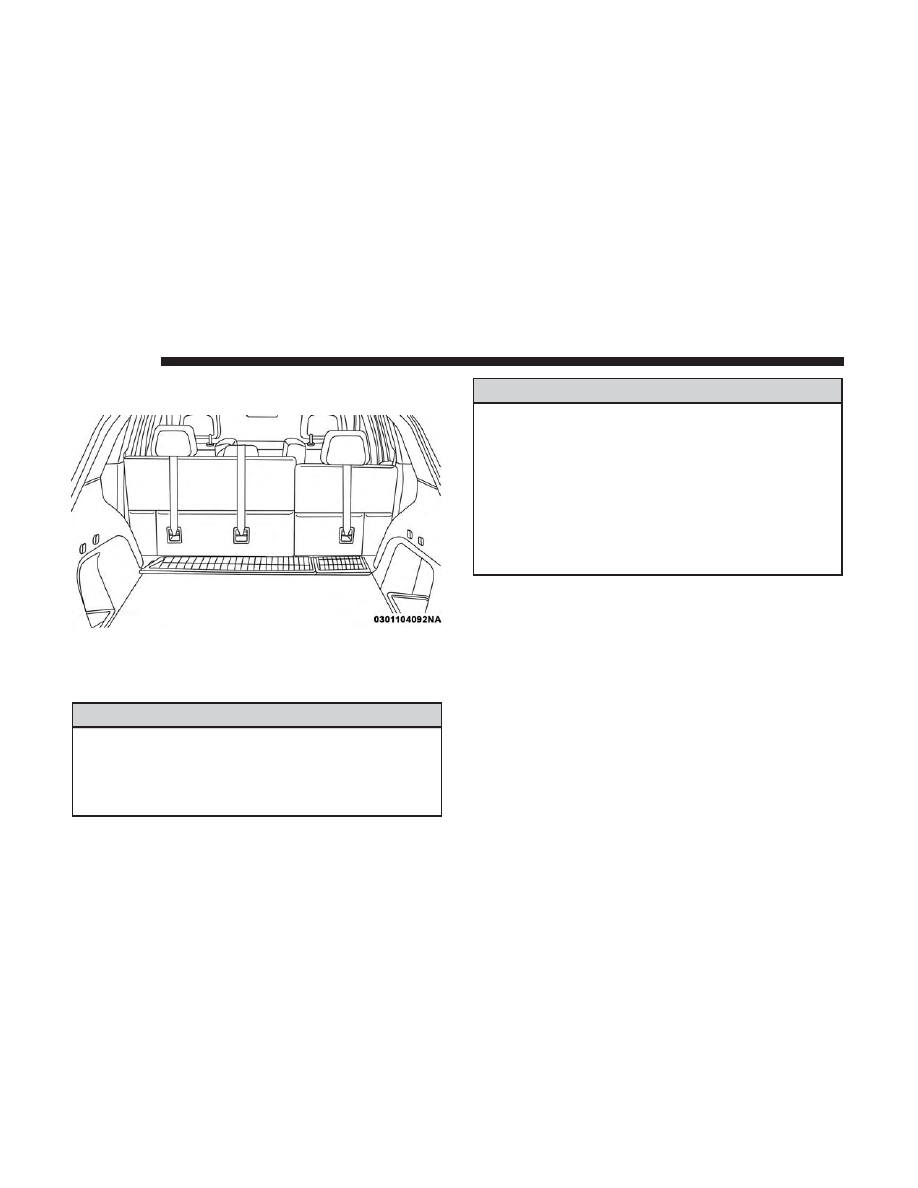Jeep Grand Cherokee (2019 year). Instruction - part 16

5. Attach the tether strap hook of the child restraint to the
top tether anchorage as shown in the diagram.
6. Remove slack in the tether strap according to the child
restraint manufacturer’s instructions.
WARNING!
• The top tether anchorages are not visible until the
gap panel is folded down. Do not use the visible
cargo tie down hooks, located on the floor behind the
seats, to attach a child restraint tether anchor.
(Continued)
WARNING! (Continued)
• An incorrectly anchored tether strap could lead to
increased head motion and possible injury to the
child. Use only the anchorage position directly be-
hind the child seat to secure a child restraint top
tether strap.
• If your vehicle is equipped with a split rear seat,
make sure the tether strap does not slip into the
opening between the seatbacks as you remove slack
in the strap.
Transporting Pets
Air Bags deploying in the front seat could harm your pet.
An unrestrained pet will be thrown about and possibly
injured, or injure a passenger during panic braking or in a
collision.
Pets should be restrained in the rear seat (if equipped) in
pet harnesses or pet carriers that are secured by seat belts.
Top Tether Strap Mounting
244
SAFETY